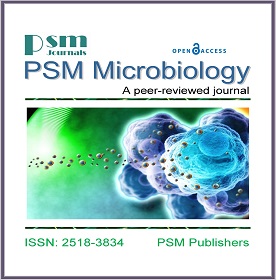Isolation and Identification of Bacteria from Ready-to-Eat Fish Sold in Makurdi Metropolis
Keywords:
Fish, Bacteria, Contamination, Makurdi.Abstract
Fish is considered one of the sources of proteins, vitamins, and minerals as well as a necessary nutrient for dietary supplementation in both infants and adults. However, fish are susceptible to a wide variety of bacterial pathogens, most of which are capable of causing disease. This research study was carried out to isolate and identify the bacterial contaminant of ready-to-eat roasted fish in Makurdi, Benue State. Twenty-five (25) samples were collected in clean polythene bags, 5 samples each from five different locations comprising High Level, Wadata, Wurukum, North Bank, and Kanshio. The samples were appropriately labelled and were taken to the laboratory for bacteriological analysis. The bacterial loads of the samples were determined using the Pour plate method of inoculation. The colonies obtained were sub-cultured repeatedly to obtain pure cultures. The isolates were identified using morphological and biochemical tests. The organisms isolated were Salmonella typhi, Escherichia coli, Shigella spp., and Staphylococcus aureus. The total viable counts ranged between 2.53x107 to 5.5x107cfu/g. The overall occurrence of bacteria isolated from the study area was 76.00%. Salmonella typhi (30.3%) had the highest occurrence while Shigella spp. (18.9%) had the least. With respect to locations, the North bank (28.3%) had the highest occurrence while the High level (15.1%) had the least. The implication is that consumers of this contaminated fish product are at high risk of getting infected with food-borne associated infections. Therefore, it is recommended that sanitary conditions under which ready-to-eat fish are handled, processed, and stored should be improved upon to reflect standard or good hygienic practices.
Downloads
Published
How to Cite
Issue
Section
License
Copyright (c) 2023 PSM

This work is licensed under a Creative Commons Attribution-NonCommercial 4.0 International License.




